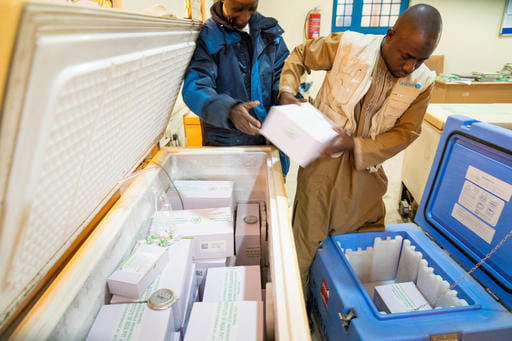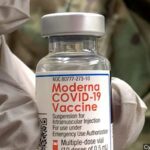Vaccine Storage Temperature Recommendations

Vaccines are a cornerstone of public health. They protect individuals and communities from a wide range of infectious diseases, from the common flu to life-threatening illnesses like COVID-19. However, ensuring the efficacy and safety of vaccines depends not only on their production but also on proper storage. Vaccine storage is a critical aspect of the immunization process, and it requires strict adherence to specific temperature guidelines to maintain the vaccine’s effectiveness.
In this article, we’ll explore the importance of vaccine storage and provide a comprehensive vaccine storage chart.
Why Proper Vaccine Storage Matters
Vaccines are composed of biological materials that are sensitive to temperature fluctuations. Exposure to temperatures that are too high or too low can compromise the potency and safety of vaccines. If vaccines are not stored correctly, they may become less effective or even ineffective, leading to inadequate protection against diseases. This can have serious consequences, especially during disease outbreaks.
Improper storage can result in various issues, including:
- Reduced Vaccine Effectiveness: When vaccines are exposed to incorrect temperatures, their active ingredients can degrade, rendering the vaccine less effective at stimulating an immune response.
- Wastage: If vaccines are compromised due to incorrect storage, they may need to be discarded, leading to wastage of valuable resources.
- Safety Concerns: In some cases, improper storage can result in the growth of harmful microorganisms in the vaccine, posing a safety risk to those who receive it.
- Vaccine Program Failures: In the case of public health vaccination programs, improper storage can undermine efforts to control and prevent disease outbreaks.
The Vaccine Storage Chart
Vaccines have specific storage requirements, which are set by the manufacturers and public health authorities. The most critical factor in vaccine storage is temperature, but other conditions, such as light exposure, humidity, and proper packaging, are also important. Below is a general vaccine storage chart with the recommended temperature ranges for COVID-19 vaccines and other commonly used vaccines:
| Vaccine | Storage Temperature Range | Additional Information |
|---|---|---|
| Pfizer-BioNTech (Comirnaty) COVID-19 Vaccine | -70°C to -60°C (-94°F to -76°F) | Can be stored in a refrigerator at 2°C to 8°C (36°F to 46°F) for up to 5 days once thawed. |
| Moderna COVID-19 Vaccine | -25°C to -15°C (-13°F to 5°F) | Can be stored in a refrigerator at 2°C to 8°C (36°F to 46°F) for up to 30 days once thawed. |
| Johnson & Johnson’s (Janssen) COVID-19 Vaccine | -20°C (-4°F) | Can be stored at refrigerator temperatures of 2°C to 8°C (36°F to 46°F) for up to 3 months. |
| AstraZeneca (Vaxzevria) COVID-19 Vaccine | 2°C to 8°C (36°F to 46°F) | N/A |
| Vaccine | Where To Store | Storage Temperature Range | Diluent Storage | Diluent Temperature Ranges |
| All DTaP vaccines (DTaP-Hep B-IPV – Pediarix, DTaP-IPV – KINRIX, DTaP-Hib-IPV – Pentacel | Refrigerator Do not freeze or expose to freezing temperatures | 2°C – 8°C (35.6°F – 46.4°F) | For those with Diluent, Refrigerator | 2°C – 8°C (35.6°F – 46.4°F) |
| Hib vaccines (PedvaxHIB and Comvax, ActHIB, Hiberix) | Refrigerator Do not freeze or expose to freezing temperatures | 2°C – 8°C (35.6°F – 46.4°F) | For those with Diluent, Refrigerator | 2°C – 8°C (35.6°F – 46.4°F) |
| Hep A: Havrix, VAQTA Hep B: Engerix-B, Recombivax HB HepA-Hep B: Twinrix | Refrigerator Do not freeze or expose to freezing temperatures | 2°C – 8°C (35.6°F – 46.4°F) | No diluent | |
| Gardasil | Refrigerator Do not freeze or expose to freezing temperatures | 2°C – 8°C (35.6°F – 46.4°F) | No diluent | |
| LAIV: FluMist | Refrigerator Do not freeze or expose to freezing temperatures | 2°C – 8°C (35.6°F – 46.4°F) | No diluent | |
| IIV | Refrigerator Do not freeze or expose to freezing temperatures | 2°C – 8°C (35.6°F – 46.4°F) | ||
| MMR | Refrigerator or Freezer | -50°C to +8°C (-58°F to +46.4°F) | Refrigerator or room temperature Do not freeze or expose to freezing temperatures | 2°C–8°C (35.6°F – 46.4°F) or 20°C–25°C (68°F – 77°F) |
| Meningococcal Conjugate Vaccines, Menveo and Menactra | Refrigerator Do not freeze or expose to freezing temperatures | 2°C–8°C (35.6°F – 46.4°F) | For those with Diluent, refrigerator | 2°C–8°C (35.6°F – 46.4°F) |
| MPSV4: Menomune | Refrigerator Do not freeze or expose to freezing temperatures | 2°C–8°C (35.6°F – 46.4°F) | Refrigerator | 2°C–8°C (35.6°F – 46.4°F) |
| PCV13: Prevnar 13 PPSV23: Pneumovax 23 | Refrigerator Do not freeze or expose to freezing temperatures | 2°C–8°C (35.6°F – 46.4°F) | ||
| IPV: IPOL | Refrigerator Do not freeze or expose to freezing temperatures | 2°C–8°C (35.6°F – 46.4°F) | ||
| RV1: ROTARIX or RV5: RotaTeq | Refrigerator Do not freeze or expose to freezing temperatures | 2°C–8°C (35.6°F – 46.4°F) | For Rotarix, store diluent separately at room temperature | 20°C–25°C (68°F – 77°F) |
| Td: DECAVAC DT: Diphtheria and Tetanus Toxoid and Tdap: Tdap: Adacel, Boostrix | Refrigerator Do not freeze or expose to freezing temperatures | 2°C–8°C (35.6°F – 46.4°F) | ||
| VAR: Varivax (chickenpox) zoster/shingles) | Freezer Vaccine should be stored only in freezers or refrigerator/freezer units with separate compartments and exterior doors | -50°C to -15°C (-58°F to 5°F) | Refrigerator or room temperature Store separately from vaccines. | 2°C–8°C (35.6°F – 46.4°F) or 20°C–25°C (68°F – 77°F) Do not freeze diluent or expose to freezing temperatures. |
| MMRV: ProQuad | Freezer Vaccine should be stored only in freezers or refrigerator/freezer units with separate compartments and exterior doors | -50°C to -15°C (-58°F to 5°F) | Refrigerator or room temperature Store separately from vaccines. | 2°C–8°C (35.6°F – 46.4°F) or 20°C–25°C (68°F – 77°F) Do not freeze diluent or expose to freezing temperatures.. |
| Zostavax (herpes zoster/shingles) | Freezer Vaccine should be stored only in freezers or refrigerator/freezer units with separate compartments and exterior doors | -50°C to -15°C (-58°F to 5°F) | Refrigerator or room temperature Store separately from vaccines. | 2°C–8°C (35.6°F – 46.4°F) or 20°C–25°C (68°F – 77°F) Do not freeze diluent or expose to freezing temperatures. |
Please note that these are general guidelines, and specific storage conditions may vary by location and the manufacturer’s recommendations. Always refer to the latest information provided by health authorities and the vaccine manufacturer for the most accurate guidance on vaccine storage.
Best Practices for Vaccine Storage
Maintaining the proper storage conditions for vaccines is essential to ensure their safety and effectiveness. Here are some best practices for vaccine storage:
- Use Reliable Storage Units: Invest in high-quality medical-grade refrigerators and freezers designed for vaccine storage. These units provide temperature stability and are equipped with temperature monitoring and alarms.
- Monitor Temperatures: Regularly check and record the temperature of the storage unit to ensure it remains within the recommended range.
- Store Vaccines Properly: Follow the “first in, first out” (FIFO) rule to use older vaccines before newer ones. Store vaccines in their original packaging, and avoid overcrowding the storage unit to allow for proper air circulation.
- Handle Vaccines Carefully: Minimize temperature fluctuations by keeping the storage unit closed as much as possible. Do not expose vaccines to direct sunlight or heat sources.
- Emergency Preparedness: Develop a plan for handling power outages, equipment malfunctions, and other emergencies to prevent vaccine spoilage.
- Regular Training: Ensure that healthcare staff responsible for vaccine storage are trained on proper storage procedures and emergency protocols.
Conclusion
Proper vaccine storage is a crucial part of immunization programs and public health efforts. By adhering to recommended temperature guidelines and best practices, healthcare providers can maintain the efficacy and safety of vaccines, ultimately safeguarding the health of individuals and communities. Stay informed about the latest vaccine storage recommendations from health authorities and manufacturers to ensure that vaccines are administered at their full potential.





